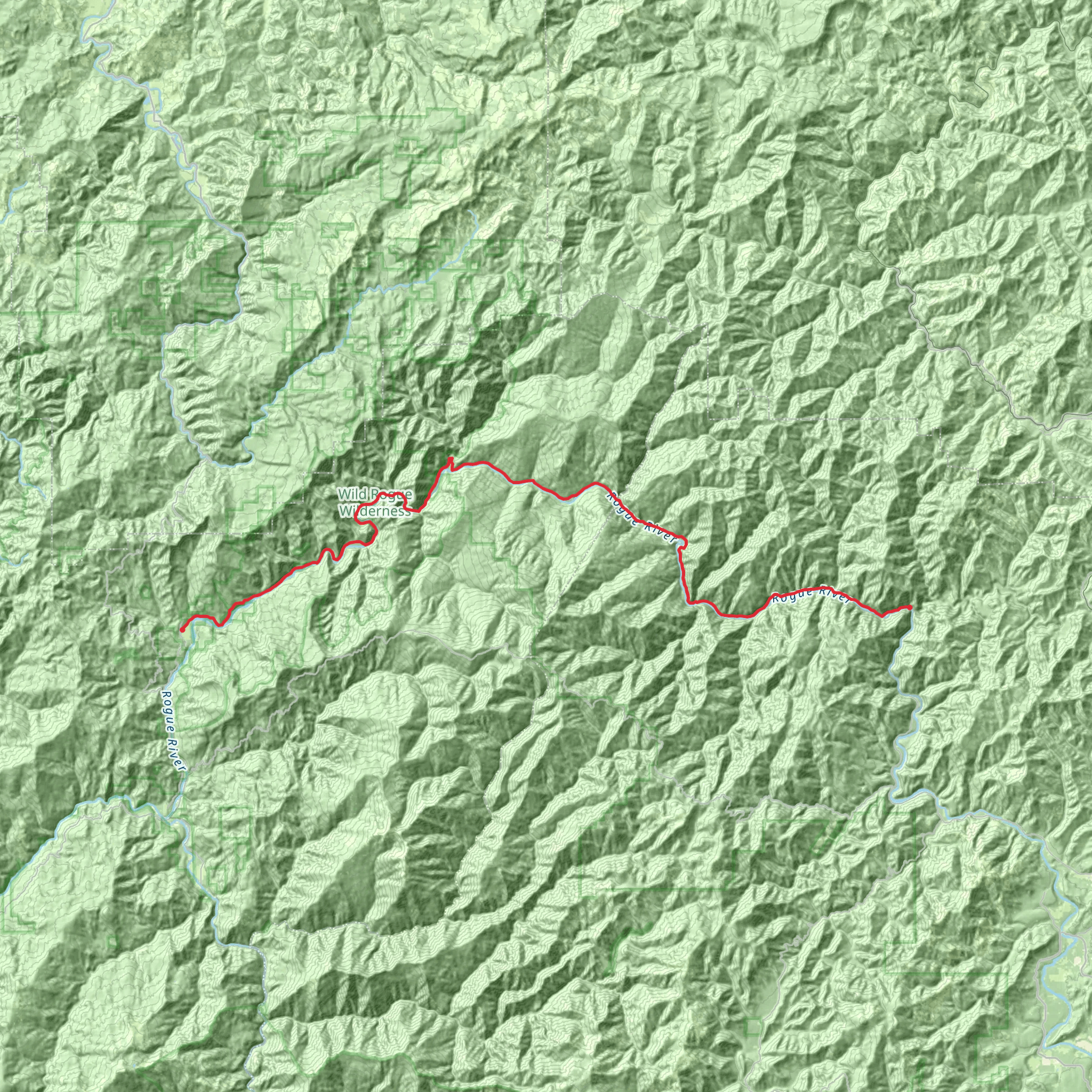Download
Preview
Add to list
More
59.7 km
~4 days
1041 m
Multi-Day
“Embark on the Rouge River Trail for a scenic and historic trek through Oregon's diverse wilderness.”
The Rouge River Trail is a challenging and rewarding point-to-point hike nestled in the heart of Oregon's wild and scenic Rogue River-Siskiyou National Forest. Spanning approximately 60 kilometers (37 miles) and with an elevation gain of around 1000 meters (3280 feet), this trail offers a diverse array of landscapes, from lush forests to rugged canyons, and is a true test of endurance and outdoor skills.
Getting to the Trailhead
To reach the trailhead near Josephine County, Oregon, hikers can drive to the Grave Creek Boat Ramp, which serves as the starting point for the trail. The boat ramp is located off of Merlin-Galice Road, which is accessible from Interstate 5 by taking the Merlin exit. For those relying on public transportation, options are limited, but regional buses may get you close to Merlin, where you would then need to arrange a taxi or shuttle service to the trailhead.
Navigating the Trail
Hikers should prepare for a remote experience, as cell service can be spotty. It's recommended to download offline maps on the HiiKER app before setting out. The trail is well-marked, but carrying a detailed map and compass is always a good practice in backcountry navigation.
Trail Highlights and Landmarks
As you embark on the Rouge River Trail, you'll be tracing the path of the historic Rogue River, a vital lifeline for Native American tribes, early settlers, and gold miners. The river itself is a designated National Wild and Scenic River, known for its biodiversity and stunning beauty.
Within the first few miles, the trail offers views of the iconic Rainie Falls, where the Rogue River roars through a narrow gorge. This is a popular spot for spotting salmon and steelhead fish making their way upstream.
Further along, at around the 25-kilometer (15.5-mile) mark, you'll encounter the remnants of the once-thriving community of Whiskey Creek, where a cabin still stands as a testament to the area's gold mining past.
Flora and Fauna
The trail cuts through several microclimates, each hosting unique plant and animal life. Expect to see towering Douglas firs, madrones, and various species of oak. The underbrush is rich with ferns, wildflowers, and berry bushes, which can provide a delicious, albeit limited, snack if you know what to look for.
Wildlife is abundant, with black bears, deer, and cougars being the larger mammals in the area. Birdwatchers will delight in the variety of species, from ospreys and bald eagles to the more elusive spotted owls.
Safety and Preparation
Given the trail's difficulty rating and remote nature, hikers should be well-prepared with adequate supplies, including water filtration systems, as natural water sources may contain pathogens. The trail is also known for poison oak, so long pants and sleeves are advisable.
Seasonal Considerations
The best time to hike the Rouge River Trail is from late spring to early fall when the weather is more predictable, and river crossings are safer. However, hikers should be prepared for sudden weather changes and check for any fire restrictions or closures before setting out.
Leave No Trace
As always, it's crucial to practice Leave No Trace principles to preserve the beauty and integrity of the trail for future generations. Pack out all trash, camp on durable surfaces, and minimize the impact on the surrounding environment.
By respecting these guidelines and preparing thoroughly, hikers can look forward to an unforgettable journey along the Rouge River Trail, steeped in natural beauty and historical significance.
What to expect?
Activity types
Comments and Reviews
User comments, reviews and discussions about the Rouge River Trail, Oregon.
4.82
average rating out of 5
11 rating(s)

